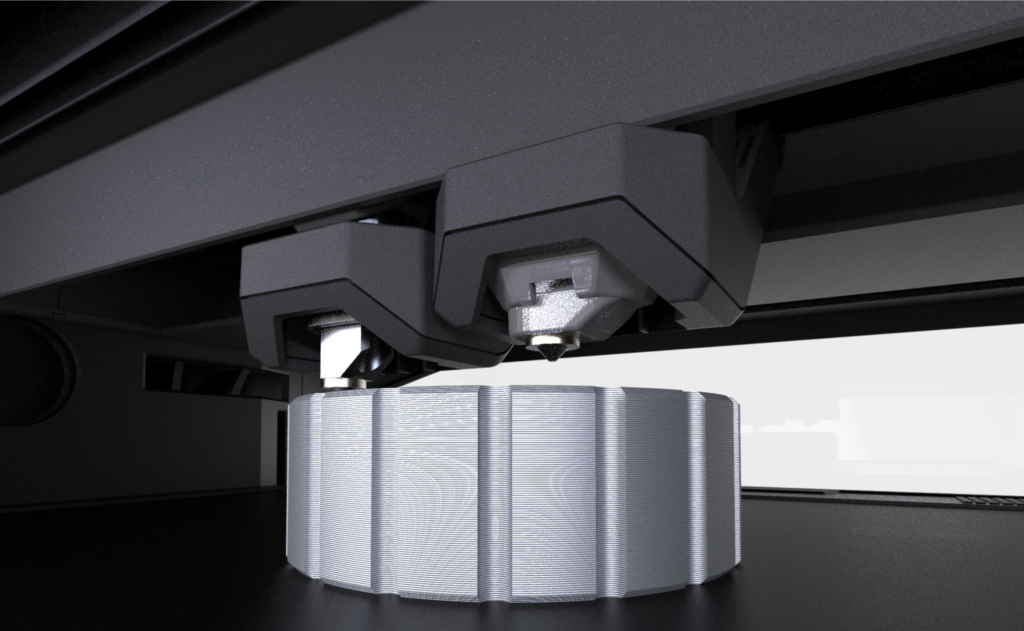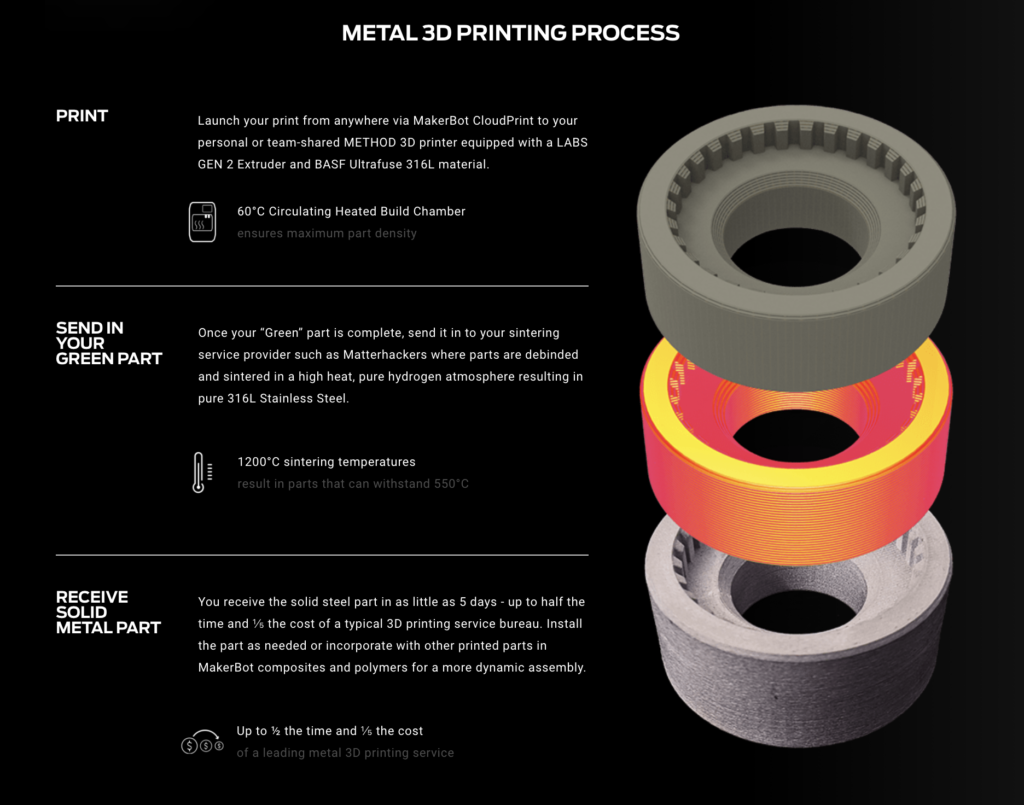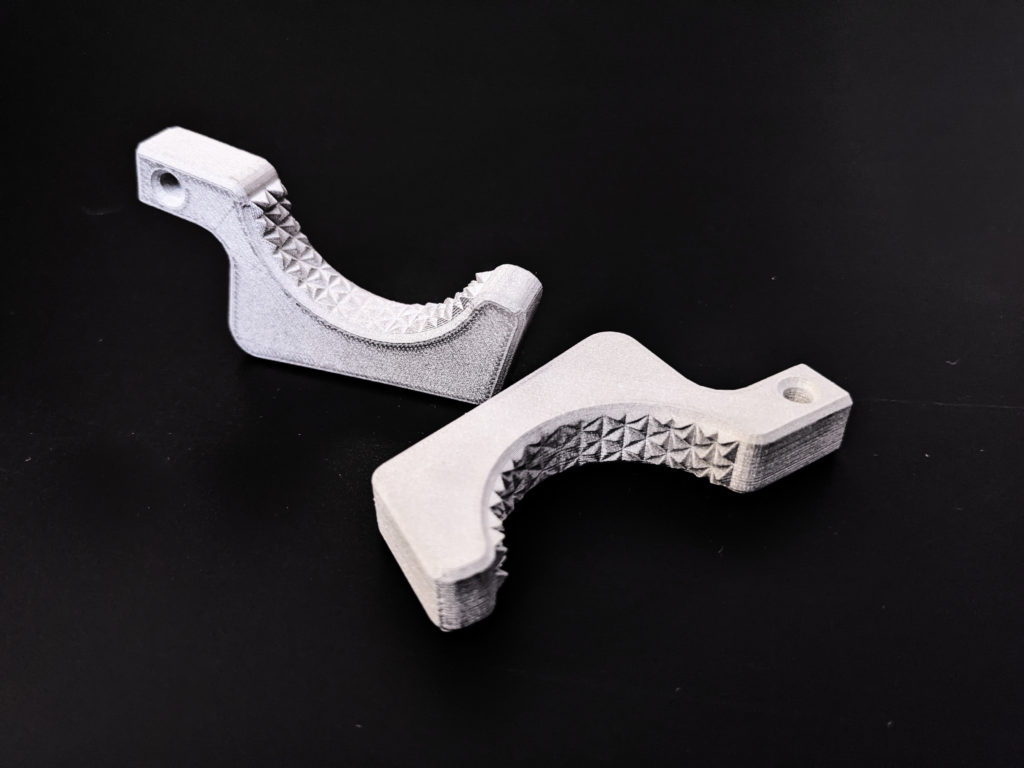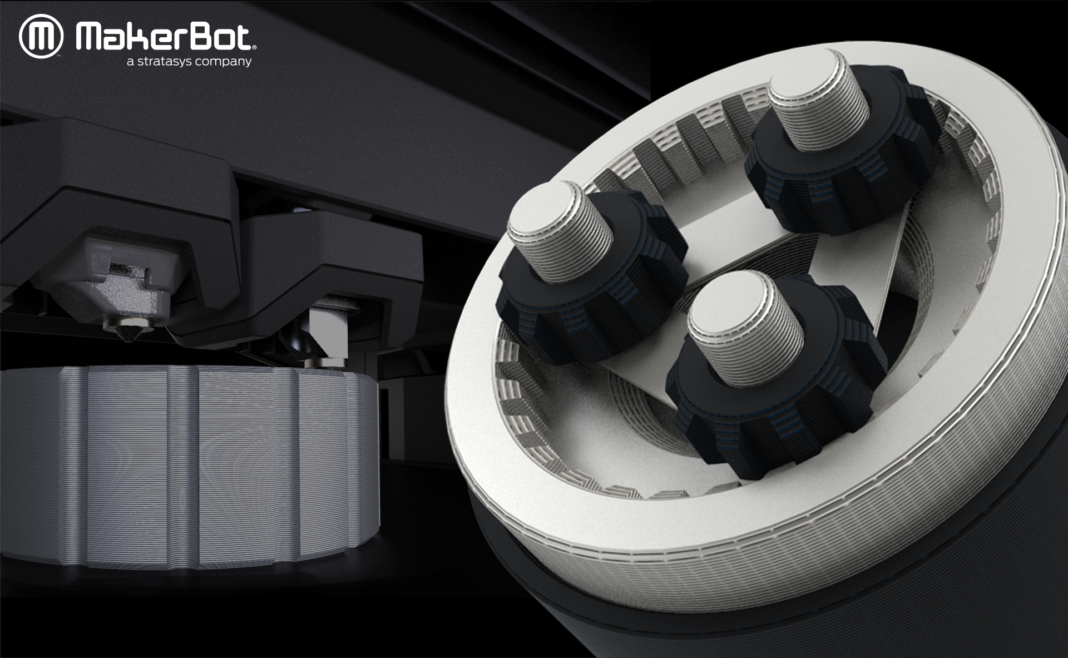MakerBot has added another capability to its METHOD® 3D Printers, the one to achieve metal 3D printing by processing the Ultrafuse® 316L Stainless Steel composite material. The Ultrafuse® 316L Stainless Steel is the first filament that BASF Forward AM developed to make metal 3D printing accessible to all.
Unveiled two years ago, the metal- polymer composite for Fused Filament Fabrication (FFF) integrates polymer properties and requires the same type of 3D printing processes than usual FDM Materials. As a reminder, its main difference with other materials is that in this specific case, the polymer content of the Ultrafuse 316L acts as a binder. Once the main polymer content of the “green part” is removed, one obtains a brown part made up of pure metal particles and a residual binder (secondary binder).
With the METHOD® 3D Printers, operators will have to use the now famous MakerBot LABS GEN 2 Experimental Extruder to achieve metal 3D printing applications with the metal filament. During the printing process, one advantage the METHOD® 3D Printers offers is the fact that the heated chamber and ability to control the speed at which a part cools down during the printing process help to reduce the risk of delamination.

Furthermore, operators who do not want to perform the post-processing stage themselves can still sent out the part to specialized manufacturing facilities for debinding and sintering in order to get their solid stainless steel. This way, not only will they not invest in expensive debinding and sintering equipment, but their final parts could achieve up to 96% of the density of pure 316L metal material.

“Ultrafuse Metal Filaments removed the barriers between metal 3D printing and users to make the technology more accessible to a larger audience. We are very excited to have our Ultrafuse 316L part of the MakerBot LABS program. We aim to add our recently launched Ultrafuse 17-4 PH filament, with the Ultrafuse 316L to make our entire portfolio accessible to MakerBot users,” said Firat Hizal, Head of Metal Systems Group, BASF 3D Printing Solutions.
Compared to other metal 3D printing technologies, there is no doubt the operator will spend less using the combination of METHOD® FDM 3D Printers and Ultrafuse® 316L Stainless Steel for metal 3D printing applications.
As far as applications are concerned, MakerBot said that it takes less time to produce 3D printing stainless steel parts, which leads to a decrease in operational costs compared to traditional methods. Furthermore, the material would be a good candidate for a variety of manufacturing tools, jigs and fixtures, and end-use parts, such as workholdings that need to withstand high temperatures; brackets that require high strength and custom designs for specialty machinery; or robotic grippers that need to be strong, lightweight, and wear resistant.

“Our customers have expressed interest in exploring metal 3D printing but have been deterred by the high costs and extensive processes of traditional metal 3D printing solutions. By supporting a metal filament as part of the MakerBot LABS program, customers now have an easier and more affordable way to experiment with 3D printing metal before investing in a full printing, debinding, and sintering solution,” said Johan-Till Broer, vice president of Product Development, MakerBot.
Last time we checked, the total number of materials available for METHOD customers was 23. With the ability to produce metal parts on METHOD® 3D Printers, this number rises to 24.
Remember, you can post job opportunities in the AM Industry on 3D ADEPT Media free of charge or look for a job via our job board. Make sure to follow us on our social networks and subscribe to our weekly newsletter : Facebook, Twitter, LinkedIn & Instagram ! If you want to be featured in the next issue of our digital magazine or if you hear a story that needs to be heard, make sure to send it to contact@3dadept.com






